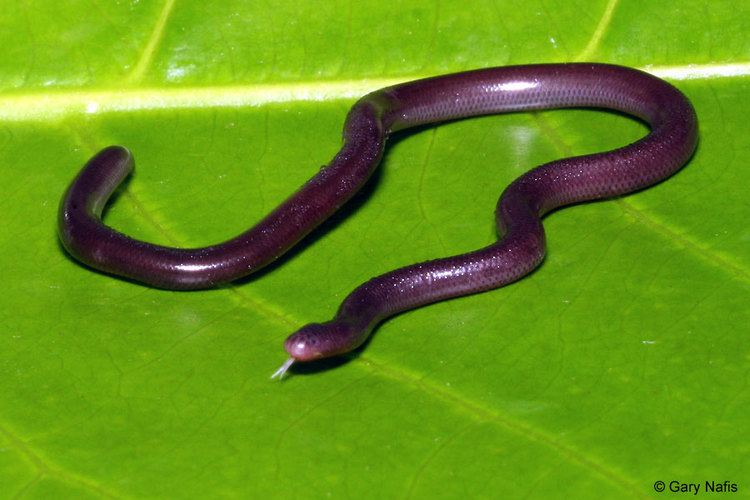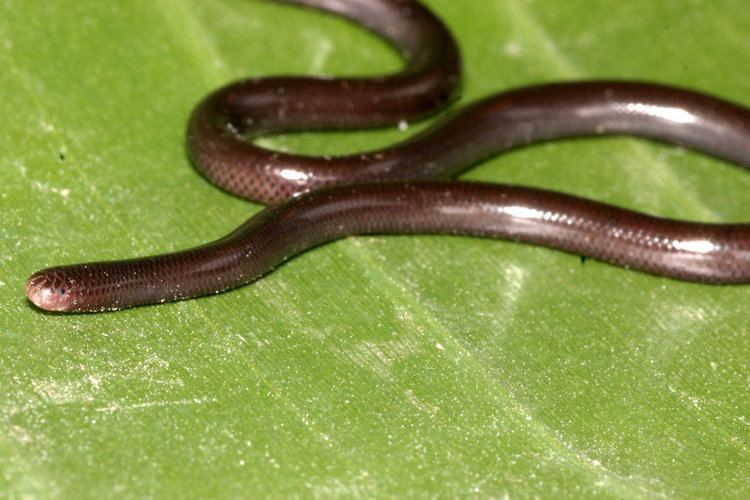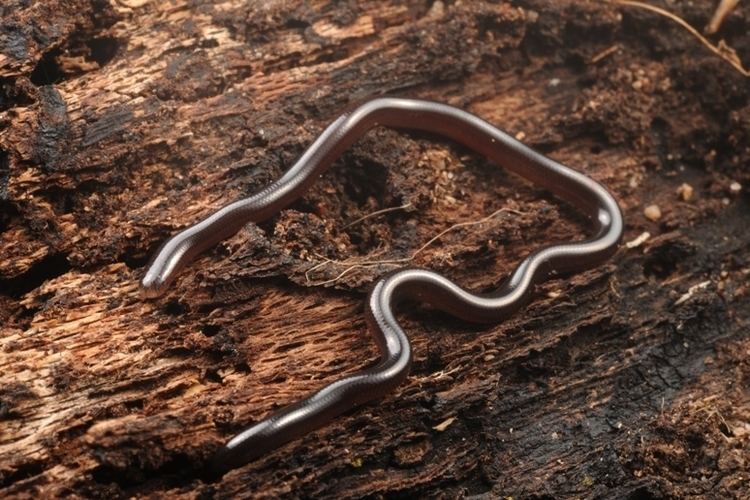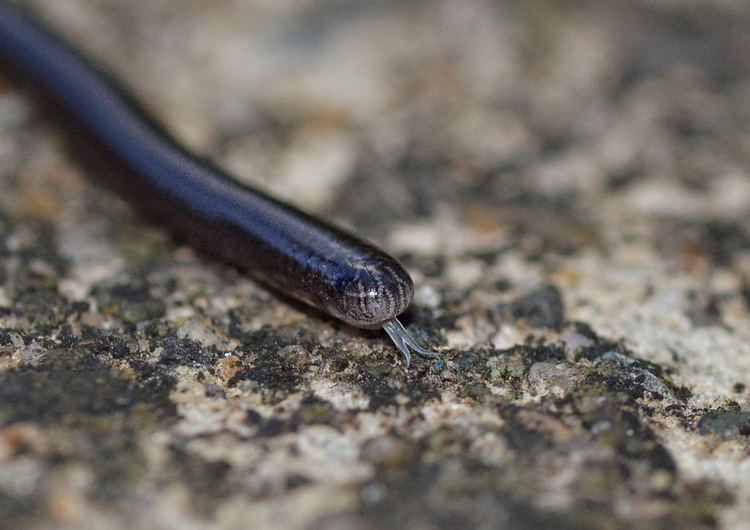Genus Indotyphlops Higher classification Ramphotyphlops | Scientific name Ramphotyphlops braminus Rank Species | |
 | ||
Similar snake, Ramphotyphlops, Scolecophidia, Typhlopidae, Reptile | ||
Brahminy blindsnake indotyphlops braminus
Indotyphlops braminus, commonly known as the brahminy blind snake and other names, is a non-venomous blind snake species found mostly in Africa and Asia, but has been introduced in many other parts of the world. They are completely fossorial (i.e., burrowing) animals, with habits and appearance similar to earthworms, for which they are often mistaken, although close examination will reveal tiny scales rather than the annular segments characteristic of true earthworms. The specific name is a Latinized form of the word Brahmin, which is a caste among Hindus. No subspecies are currently recognized.
Contents
- Brahminy blindsnake indotyphlops braminus
- Description
- Common names
- Geographic range
- Indigenous
- Introduced
- Habitat
- Feeding
- Reproduction
- References

Description

Adults are small and thin, averaging between 6.35-16.5 cm (2½ to 6½ inches) in length. The head and tail-tip look much the same, with no narrowing of the neck. The rudimentary eyes appear only as a pair of small dots under the head scales. The tip of the tail ends with a tiny pointed spur. The head scales are small and resemble those on the body. There are 20 rows of dorsal scales along the entire body. The coloration of the adults varies from shiny silver Gray to charcoal gray or purple. The venter is grayish to brown. Juveniles are colored much the same as the adults.

The tiny eyes are covered with translucent scales, rendering these snakes almost entirely blind. The eyes cannot form images, but are still capable of registering light intensity.
Common names

Indotyphlops braminus is variously known as brahminy blind snake (or brahminy blindsnake), flowerpot snake, common blind snake, island blind snake, and Hawaiian blind snake. The moniker "flowerpot snake" derives from the snake's incidental introduction to various parts of the world through the plant trade.
Geographic range

Found in Africa and Asia. It is an introduced species in many parts of the world, including Australia and the Americas. It is common throughout most of Florida now.
The vertical distribution is from sea level to 1,200 m in Sri Lanka and up to 1,500 m in Guatemala. The type locality given is "Vizagapatam" [India].
This is also the only snake reported from the Lakshadweep Islands.
Indigenous
In Africa, it has been reported in Senegal, Benin, Togo, Ivory Coast, Cameroon, Somalia, Zanzibar, Tanzania, Mozambique, South Africa (an isolated colony in Cape Town, also about 8 have been found in Lephalale, Limpopo Province at the Medupi Power Station during construction), Madagascar, the Comoro Islands, Mauritius, the Mascarene Islands and the Seychelles.
In Asia it occurs on Arabian Peninsula, Iran, Pakistan, Nepal, mainland India, the Maldives, the Lakshadweep Islands, Sri Lanka, Bangladesh, the Andaman Islands, the Nicobar Islands, Myanmar, Singapore, the Malay Peninsula, Thailand, Cambodia, Vietnam, Laos, Hainan, southern China, Hong Kong, Taiwan, and the Ryukyu Islands of Okinawashima and Miyakoshima.
In Maritime Southeast Asia it occurs on Sumatra and nearby islands (the Riao Archipelago, Bangka, Billiton and Nias), Borneo, Sulawesi, the Philippines, Butung, Salajar, Ternate, Halmahera, Buru, Ceram, Ambon, Saparua, Java, Bali, Lombok, Sumbawa, Madura, Flores, Lomblen, Sumba, Timor, East Timor, Kai Island, the Aru Islands, New Guinea (Western Papua and Papua New Guinea), New Britain and Bougainville Island.
It occurs in the Cocos (Keeling) Islands, on Christmas Island.
Introduced
In Australia it occurs in the Northern Territory near Darwin, and at the northern tip of Queensland.
In Oceania, it occurs on Palau, Guam, Saipan, and the Hawaiian Islands.
The Americas it occurs in the United States (California, Florida, Louisiana, Massachusetts, & Texas); western and southern Mexico; and Guatemala; and on the Cayman Islands.
Habitat
Usually occur in urban and agricultural areas. These snakes live underground in ant and termite nests. They are also found under logs, moist leaves and humus in wet forest, dry jungle and even city gardens. The distribution and survival of this group of snakes directly reflects soil humidity and temperature.
Feeding
Their diet consists of the larvae, eggs, and pupae of ants and termites.
Reproduction
This species is parthenogenetic and all specimens collected so far have been female. They lay eggs or may bear live young. Up to eight offspring are produced: all female and all genetically identical.
